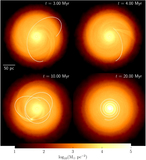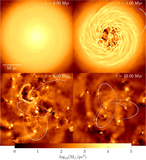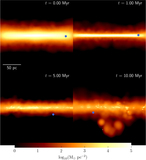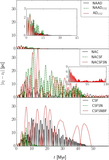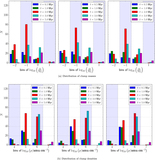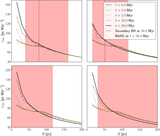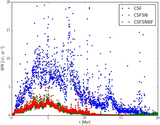Image Details
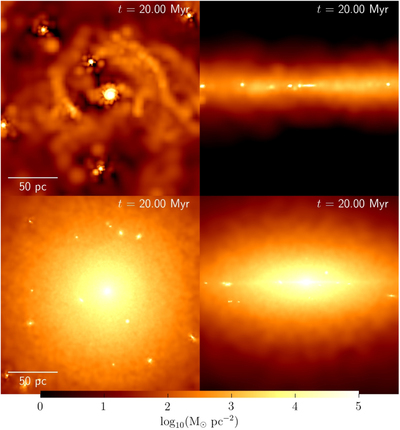
Caption: Figure 8.
Baryonic density maps of runs NAC and NACSF. In the top row, we show the face-on (left) and edge-on (right) gas density maps at 20 Myr for run NAC. The bottom row shows the corresponding maps for the stellar density in run NACSF, which is the dominant component of the disk’s baryonic content (in this run, the stellar mass surpasses the gaseous mass by a factor greater than four). Strong star formation leads to a less-contrasted density background along the secondary BH trajectory, as the collapsing massive gas clumps give space to stellar overdensities that are less likely to further collapse into a more closely bound structure. By comparatively loosening up the clumps, they become more prone to disruption via encounters, allowing the matter to be redistributed into a smoother disk. A smoother background remits to the adiabatic runs, in the sense that the dynamics of the secondary BH become dominated by its interaction with the disk on a local and global scale, whereas strong scatterings from clump encounters play a minor role.
Copyright and Terms & Conditions
© 2017. The American Astronomical Society. All rights reserved.



